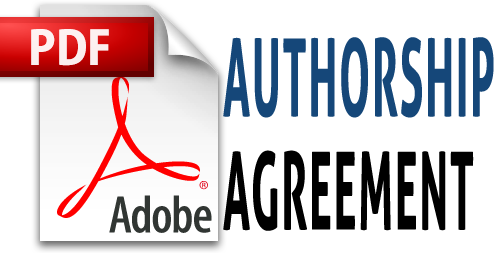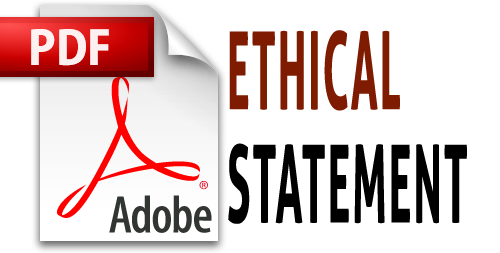ANALYSIS OF THE FEASIBILITY OF SCIENCE LEARNING MULTIMEDIA BASED ON SCIENTIFIC INQUIRY
 Uswatun Hasanah(1*),
Edwita Edwita(2),
Ahmad Januar(3)
Uswatun Hasanah(1*),
Edwita Edwita(2),
Ahmad Januar(3)
(1) Universitas Negeri Jakarta
(2) Universitas Negeri Jakarta
(3) SDN Cipulir 11
(*) Corresponding Author
 Abstract viewed : 3065
|
Abstract viewed : 3065
|  PDF downloaded : 153
PDF downloaded : 153
Abstract
Scientific inquiry-based science learning multimedia plays a very important role in fostering students' critical thinking skills. This study aims to analyze the feasibility of the media that has been made based on input from experts. This study involved 15 experts consisting of material experts, linguists, media experts, and learning design experts as well as educational practitioners. Based on calculations using Aiken's V, it shows that the entire index V > 0.79 (V table Aiken). This proves that all items contained in the questionnaire represent the construct being measured and are said to have adequate content validity. In addition, input from experts was also analyzed qualitatively. Thus, interactive multimedia products are said to be valid for use as science learning media. This media can be a recommendation for teachers to teach science, especially in abstract material and can train students' critical thinking skills.
Abstrak
Multimedia pembelajaran IPA berbasis scientific inquiry sangat berperan dalam menumbuhkan keterampilan berpikir kritis siswa. Adapun penelitian ini bertujuan untuk menganalisis kelayakan media yang telah dibuat berdasarkan masukan dari para ahli. Penelitian ini melibatkan 15 ahli yang terdiri dari ahli materi, ahli bahasa, ahli media, dan ahli desain pembelajaran serta praktisi pendidikan. Berdasarkan perhitungan menggunakan Aiken’s V menunjukkan bahwa seluruh indeks V > 0.79 (V tabel Aiken). Hal ini membuktikan bahwa seluruh item yang terdapat pada kuesioner mewakili konstrak yang diukur dan dikatakan memiliki validitas isi yang memadai. Di samping itu masukan dari para ahli juga dianalisa secara kualitatif. Dengan demikian, produk multimedia interaktif dikatakan valid digunakan sebagai media pembelajaran IPA. Media ini dapat menjadi rekomendasi bagi para guru untuk membelajarkan IPA khususnya pada materi yang abstrak dan dapat melatih keterampilan berpikir kritis siswa.
Keywords
References
Anisimova, E. S. (2020). Digital literacy of future preschool teachers. Journal of Social Studies Education Research, 11(1), 230–253.
Azizatunnisa, F., Sekaringtyas, T., Hasanah, U., Pendidikan, F. I., Jakarta, U. N., & Dasar, S. (2022). Pengembangan Media Pembelajaran Interaktif Game. 6(1), 14–23.
Bellaera, L., Weinstein-Jones, Y., Ilie, S., & ... (2021). Critical thinking in practice: The priorities and practices of instructors teaching in higher education. Thinking Skills and …. https://www.sciencedirect.com/science/article/pii/S1871187121000717
Chen, J. C. (2022). Developing a cycle-mode POED model and using scientific inquiry for a practice activity to improve students’ learning motivation, learning performance, and hands-on …. Interactive Learning Environments. https://doi.org/10.1080/10494820.2020.1716023
Ennis, R. (2018). Critical Thinking Across the Curriculum: A Vision. Topoi, 37(1), 165–184. https://doi.org/10.1007/s11245-016-9401-4
Fazio, C., Di Paola, B., & Battaglia, O. R. (2020). A study on science teaching efficacy beliefs during pre-service elementary training. International Electronic Journal of Elementary Education, 13(1), 89–105. https://doi.org/10.26822/iejee.2020.175
Gunawan, G. (2020). Gender description on problem-solving skills in chemistry learning using interactive multimedia. Journal for the Education of Gifted Young Scientists, 8(1), 561–589. https://doi.org/10.17478/jegys.627095
Hasanah, Uswatun, Astra, S. (2023). Exploring the Need for Using Science Learning Multimedia ( SLM ) to Improve Critical Thinking Elementary School Students : Teacher. 16(1), 1–26.
Hasanah, U. (2021). IMPLEMENTATION OF ONLINE LEARNING FOR CHILDREN WITH LANGUAGE DISORDER. 11(1).
Husein, S. (2021). Problem-Based Learning with Interactive Multimedia to Improve Students’ Understanding of Thermodynamic Concepts. In Journal of
Physics: Conference Series (Vol. 1233, Issue 1). https://doi.org/10.1088/1742-6596/1233/1/012028
Jong, T. de, Gillet, D., Rodríguez-Triana, M. J., Hovardas, T., Dikke, D., Doran, R., Dziabenko, O., Koslowsky, J., Korventausta, M., Law, E., Pedaste, M., Tasiopoulou, E., Vidal, G., & Zacharia, Z. C. (2021). Understanding teacher design practices for digital inquiry-based science
learning: the case of Go-Lab. In Educational technology research and development : ETR & D (pp. 1–28). https://doi.org/10.1007/s11423-020-09904-z
Lin, X. F., Hwang, G. J., Wang, J., Zhou, Y., Li, W., & ... (2022). Effects of a contextualised reflective mechanism-based augmented reality learning model on students’ scientific inquiry learning performances, behavioural patterns …. Interactive Learning …. https://doi.org/10.1080/10494820.2022.2057546
Mayer, R. E., & Moreno, R. (1998). Cognitive Theory of Multimedia Learning. The Cambridge Handbook of Multimedia Learning, Mayer, R., 31–49. http://www.learning-theories.com/cognitive-theory-of-multimedia-learning-mayer.htm
Modlinger, D. (2020). eLearning und Mobile Learning – Konzept und Drehbuch. http://books.google.com/books?id=7gk0ksBEVYAC&pgis=1%5Cnhttp://link.springer.com/10.1007/978-3-642-17206-9%5Cnhttp://link.springer.com/10.1007/978-3-642-17206-9
Nippold, M. (2015). Critical thinking about fables: Examining language production and comprehension in adolescents. Journal of Speech, Language, and Hearing Research, 58(2), 325–335. https://doi.org/10.1044/2015_JSLHR-L-14-0129
Pan, Z., López, M. F., Li, C., & Liu, M. (2021). Introducing augmented reality in early childhood literacy learning. Research in Learning Technology, 29(1063519), 1–21. https://doi.org/10.25304/rlt.v29.2539
Pardjono, P. (2020). Multimedia interactive learning of pictorial projection mechanical engineering skills in vocational high schools. In Journal of Physics: Conference Series (Vol. 1700, Issue 1). https://doi.org/10.1088/1742-6596/1700/1/012009
Ruth Clack, R. E., & Mayer. (n.d.). Why is e-Learning and the Science of Instruction.
Samaniego-Mena, E. (2020). Interactive multimedia as support for the therapy of infants with dyslalia. Revista de Ciencias Sociales, 26(4), 368–379. https://doi.org/10.31876/rcs.v26i4.34668
Stylinski, C. D., Peterman, K., Phillips, T., & ... (2020). Assessing science inquiry skills of citizen science volunteers: a snapshot of the field. … Journal of Science …. https://doi.org/10.1080/21548455.2020.1719288
Takaya, K. (2019). Jerome Bruner’s theory of education: From early Bruner to later Bruner. Interchange, 39(1), 1–19. https://doi.org/10.1007/s10780-008-9039-2
Tampubolon, T. (2020). The Application of Bruner’s Learning Theory on Teaching Geometric at Smp Negeri 2 Sipahutar in Academic Year 2017/2018. International Journal of Advanced Engineering, Management and Science, 4(5), 351–356. https://doi.org/10.22161/ijaems.4.5.1
Urbani, J., Roshandel, S., Michaels, R., & Truesdell, E. (2017). Developing and Modeling 21st-Century Skills with Preservice Teachers. Teacher Education Quarterly, 44(4), 27–50.
William W. Lee, D. L. O. (2004). Multimedia-based Instructional Design: Computer-based Training, Web-based Training, Distance Broadcast Training, Performance-based Solutions, 2nd Edition. 488.
Wu, Y. P., Aspinwall, L. G., Nagelhout, E., Kohlmann, W., Kaphingst, K. A., Homburger, S., Perkins, R. D., Grossman, D., Harding, G., Cassidy, P., & Leachman, S. A. (2018). Development of an Educational Program Integrating Concepts of Genetic Risk and Preventive Strategies for Children with Family History of Melanoma. In Journal of cancer education : the official journal of the American Association for Cancer Education (Vol. 33, Issue 4, pp. 774–781). https://doi.org/10.1007/s13187-016-1144-9
Refbacks
- There are currently no refbacks.
Copyright (c) 2023 Uswatun Hasanah, Edwita Edwita, Ahmad Januar

This work is licensed under a Creative Commons Attribution-NonCommercial 4.0 International License.
Kwangsan Indexed By
Kwangsan: Jurnal Teknologi Pendidikan diterbitkan oleh Balai Besar Guru Penggerak (BBGP) Prov. Jawa Timur.
Kementerian Pendidikan dan Kebudayaan
Alamat Redaksi:
Jl. Mangkurejo, Ds. Kwangsan, Sedati - Sidoarjo.
Telp 0318911373 Fax. 0318911392
Email: jurnal.kwangsan@kemdikbud.go.id & jurnalkwangsan@dikbud.belajar.id






























